#history of punjab
Text

Punjabi music has a rich and diverse history that reflects the cultural vibrancy of the Punjab region. From its folk origins and classical influences to the modern-day fusion of styles, Punjabi music continues to evolve while maintaining its distinct identity. Whether through the beats of Bhangra or the soulful strains of Sufi songs, Punjabi music remains a powerful expression of the region's cultural heritage and an enduring source of joy and inspiration for millions around the world.
#punjabi music#punjabi songs#new punjabi song#latest punjabi songs#punjabi song#new punjabi songs#latest punjabi songs 2021#new punjabi song 2021#punjabi music industry#punjabi#latest punjabi song#history of punjabi cinema#history of punjab#history of punjabi industry#new punjabi song 2022#top 10 biggest hits of punjabi music#story of punjab#punjab#latest punjabi song 2021#latest punjabi song 2022#new song story of punjab#story of punjab new song
0 notes
Text

In the 16th century in Punjab, Shah Hussain, a Sufi poet and mystic met and fell in love with a Hindu boy called named Madho Lal. Though gay marriage was not legal anywhere in the world before this century, Hussain and Madho defied social conventions and lived together for six years till Hussain's death in 1599. Hussain's poetry is significantly inspired by his relationship with Madho, with some poems addressed directly to him. After Hussain's death Madho continued to live close to where he was buried in present day Baghbanpura in Lahore, and was buried next to Hussain after his death. They continue to lie buried side by side in the same enclosure to this day, and the enclosure is named Hazrat Madho Lal Hussain, embodying one soul living in two bodies.
The annual celebration called Mela Chiraghan or Festival of Lights is held in March in Lahore in order to celebrate the love of Madho and Hussain as well as Hussain's poetry. It is unknown how the ritual was established, but it dates as far back as the the 18th century: there are records of Maharaja Ranjit Singh leading a barefooted procession from the Fort to the mausoleum for this celebration. At present, the festival is conducted over three days and attracts large crowds. Cotton-seed oil lamps are lighted in the streets and houses of the city. Devotees sing and dance and read Hussain's poetry in order to commemorate the triumph of tolerance over forces of bigotry.
#ots#gay history#lgbtq#lgbtqia#lgbt history#queer history#queer#mlm#punjab#sufi#lahore#pakistan#south asia#south asian#shah hussain#madho lal hussain#mela chiraghan#desi tumblr#desiblr#desi tag#south asian history
432 notes
·
View notes
Text
homogenising something that has always been inherently diverse will kill us all one day.
#-> myra text#political critique#that is why hindutva should have not been popularised. hindutva is not decolonisation or reclamation.#it is homogenising and exclusionist. it takes away the diverse history of this country.#but this statement will reach deaf ears. rather than critiquing nobility they will go and bark casteist and islamphobic bs.#did invaders did what invaders do? yes. but this whole property destruction and lives being at risk has been going on for years.#biggest example who are quite popular: ajatshatru (son of bimbisara) & ashoka the great (the massacre at kaling)#i'm all in for criticising nobility i have no respect for any kings despite their religion and community and whatever.#they're all shits who benefited and left the common people to rot.#these people will say that tipu sultan is the devil reborn but will go on praising the marathas#as if the marathas did not cause a bloodshed in bengal karnataka and the punjab regions. not saying tipu is good but i rather#wanted to point out the hypocrisy of people in certain spaces. its a good thing to appreciate history and even better thing to learn from#the mistakes made in past but some of you guys did not understand the whole point.#absolute shit head cunts some of you guys are. come at me brand me whatever slurs you fuckers use i don't give a shit#calling people sex slaves just because they don't subscribe to your viewpoint is not the big own you think it is.#sanghi bs#india#hindutva
138 notes
·
View notes
Text

The Sheesh Mahal, Lahore Fort, Punjab, Pakistan
Located within the Shah Burj block in northern-western corner of Lahore Fort. It was constructed under the reign of Mughal Emperor Shah Jahan in 1631-32.
The ornate white marble pavilion is inlaid with pietra dura and complex mirror-work of the finest quality.
The hall was reserved for personal use by the imperial family and close aides.
#art#design#architecture#history#luxury lifestyle#style#luxury house#luxury home#fortress#mahal#sheesh mahal#lahore#lahore fort#punjab#palistan#mirrors#pietra dura#imperial#interior design
136 notes
·
View notes
Text

Oval cornelian intaglio showing the head of a woman in profile; she holds a lotus flower in an upraised hand.
Inscription in Sanskrit (Brahmi script): kusumadasasya
Translation: [Seal] of the slave of Kusuma / [Seal] of the slave of Kesava/Vishnu (?)
Punjab, Pakistan, 4thC-5thC
#Cornelian#intaglio#artifacts#women#flowers#Sanskrit#brahmi#Punjab#Pakistan#4th century#5th century#history
25 notes
·
View notes
Text
midnight burger is like if doctor who was always well written. and also, usamerican
#ari opinion hour#the usamerican part is PARTIALLY related bc like. gloria is mexican american#its true to the culture and history and stuff of the us and sensitive about that stuff#WHILE ALSO BEING SELF AWARE#dr who would be better more often if it didnt fuck up with that kind of thing. like colonialism etc#my best analogy is like.#Midnight burger is like the usamerican vers of what dr who would be if it was like oxygen + demons of the punjab ALL the time#midnight burger isnt better BECAUSE its usamerican but bc it is self aware of and sensitive to the culture + people in the place its from
16 notes
·
View notes
Text
कबीर, राज तजना सहज है, सहज त्रिया का नेह। मान बड़ाई ईर्ष्या, दुर्लभ तजना येह ॥
#FridayMotivation

#santrampalji is trueguru#kabir is supreme god#sant rampalji maharaj app#india#viral#varanasi#politics#photography#punjab#uk#ukraine#history#hindu#hinduism#australia#new zealand#canadian#zimbabwe#kabirgod
22 notes
·
View notes
Text
On This Day In History
March 29th, 1849: Punjab is annexed into the United Kingdom.
56 notes
·
View notes
Photo

White Huns (Hephthalites)
The White Huns were a race of largely nomadic peoples who were a part of the Hunnic tribes of Central Asia. They ruled over an expansive area stretching from the Central Asian lands all the way to the Western Indian Subcontinent. Although being a mostly nomadic tribe, they nonetheless adopted the lifestyles of the lands they conquered but still retained their warlike nature. Their rule begins in the 5th cent CE, but they lingered on in the region for a substantial amount of time after their kingdom fell and eventually integrated so well into the Indian culture that their practices and traditions became a full part of it.
Continue reading...
70 notes
·
View notes
Text
DHAN BABA DEEP SINGH JI
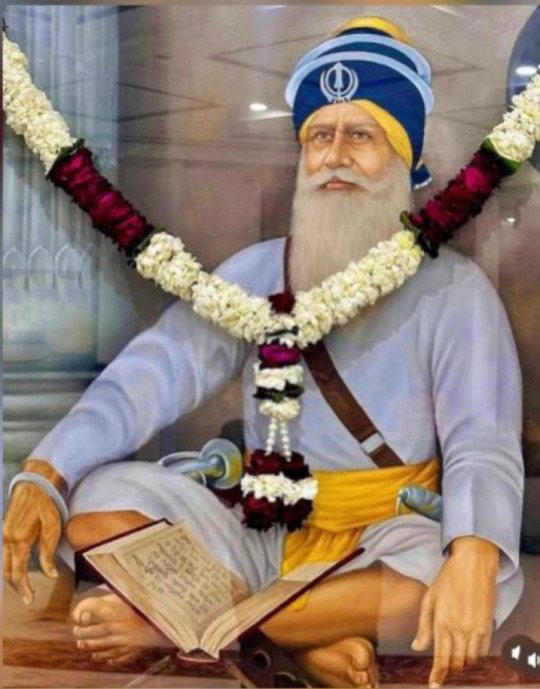
BABA DEEP SINGH JI SHAHEED 🙏🏻 (26 January 1682 - 13 November 1757)
“ਜਉ ਤਉ ਪ੍ਰੇਮ ਖੇਲਣ ਕਾ ਚਾਉ॥ ਸਿਰੁ ਧਰਿ ਤਲਿ ਗਲੀ ਮੇਰੀ ਆਉ॥ ਇਤੁ ਮਾਰਗਿ ਪੈਰੁ ਧਰਿਜੇ ॥ ਸਿਰੁ ਦਿਜੈ ਕਾਣਿ ਵ ਕੀਜੈ ॥੨੦ ॥”
( If you desire to play this game of love with Me (god), Then stop onto My Path with your head in Hand. When you place your feet on this Path, Give me your head and don’t pay any attention to public opinion. ॥20॥)
{From: Guru Granth Sahib Ji, Ang: 1410 to 1412, section: Salok Varan Thay Vadhekh }
Baba Deep Singh ji was a Sikh leader known for his bravery and devotion to Sikhism also one of the most hollowed martyrs in Sikhism. He is remembered for his sacrifice and devotion to the teachings of the Gurus .
Baba Deep Singh ji was born on 26 January 1682 in Sandhu Jatt Sikh family. His father name was “Bhai Bhagta ji” and he was a farmer and his mother was “Mata Jioni Ji”. He born in Pahuwind village in Tarn Taran, Amritsar district of Punjab, India.
He was the first head of Misl Shaheedan Tarna Dal and first head of Damdaki Taksal, then head of Sharomani Panth Akali Buddha Dal.
The Battle of Amritsar, also known as the “Siege of Amritsar”, occurred in 1757. It was a fierce battle between the Sikhs and the Mughal forces. The Sikhs were defending the city Amritsar and the Golden Temple from the Mughals Afghan Army. During the battle, Baba Deep Singh offered prayers before starting “May My Head Fall At The DARBAR SAHIB”. Baba Deep Singh, who was in his 70s, displayed exceptional courage and determination. Despite being severely wounded, he continued fighting and ultimately fulfilled his vow to reach the Golden Temple. His act of bravery and sacrifice is celebrated in Sikh history and culture.
In 1757 on 13 November, during the Battle of Amritsar, he fought fearlessly and sacrificed himself . The Battle of Amritsar strengthened the resolve of the Sikh community and solidified their commitment to defending their faith and sacred sites. It also contributed to the historical significance of the Golden Temple in Sikhism.
He also fought the Battle of Chapal Chiri (1710), Battle of Sadhuara (1710) and Siege of Sirhind (1710) alongside with BaBa Banda Singh Bahadur.
His courage, dedication and legacy is a powerful reminder of the strength of faith and the importance of standing up for what you believe and also for religion. Baba Deep Singh Ji's unwavering determination and fearlessness in the face of adversity are truly inspiring. His commitment to protecting the Golden Temple and his willingness to sacrifice himself for his beliefs are qualities that inspires us to be stand up for ourselves.
#sikhism#sikh#khalsa#babadeepsinghji#amritsar#punjab#punjabi#history#martyrs#writers on tumblr#religion#january#trendingtopics#writing community#lu warriors
8 notes
·
View notes
Text

Day in Fandom History: November 11…
At Yaz's request, The Doctor takes her, Ryan, and Graham to 1947 India to learn about her grandmother's life despite an incoming unknown marriage, the Partition of India, and mysterious demons lurking in the shadows. “Demons of the Punjab” premiered on this day, 5 Years Ago.
11 notes
·
View notes
Text
The original bearers of Gold jewellery
(Other than the Egyptions)
Do you know what it means for me to be a Punjabi woman? It means that I am the one who will write and sing and tell you that I love you. I will laugh loudly with tears laced with surma running down my face. I will argue that a patiala shalwar is the most attractive and that a paranda can never be called old-fashioned. I walk, dance and breathe on the land of five rivers; the land that carried the foundations of the subcontinent and has thrived under incredible rulers.
I speak a language that has no script of its own. I live on a land that yearns for its other half. I run on the soil that so easily washes away the blood that stains it.
"Ya Rabb, do I still live in my former glory?"
2 notes
·
View notes
Text
Only 35% through this book but it's genuinely making me feel insane
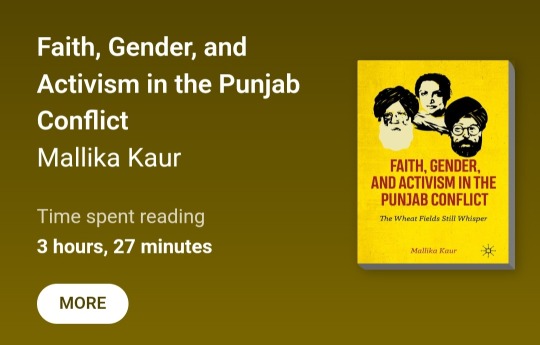
#like its actually blowing my mind and giving me an insight into history i knew only in passing#like!!!!!#it goes literally from british raj to republic#dicsusses major points of punjabs historh#liek theres so much info....#idk what the latter 65% will be like but man#anywayd this is random but when the chapters get to the part of missing and disappeared sikhs...#i wonder if my uncles name will appear .. from those who survived and witnessed the torture punjab police put people through#because its presumed he's dead but no one in my dads family actually knows what happened to him
6 notes
·
View notes
Text

#terracotta figurine#ritual figurine#yoga#Harappa Museum#history of yoga#Indus Valley Civilization#Sahiwal#Punjab#Pakistan
4 notes
·
View notes
Text
Countries that are no more: Sikh Empire (1799-1849)
Though short lived, this empire was notable for a few reasons. First, it was the last major bastion of native rule on the Indian Subcontinent before a century of unchecked British rule which had already been gradually expanding over the preceding century. Secondly, it was diverse & tolerant in its ethnic and religious composition, not just in the general populace but more uniquely in its administration. Finally, it was notable for the religion of its leaders, perhaps the only time in history where Sikhs reigned atop an empire. This is the Sikh Empire.
Name: In English, the empire is known as the Sikh Empire. In Persian this was translated as Sarkār-i-Khālsa or the Khālasā Rāj in Punjabi. These languages were important administratively within the empire. Essentially to mean empire or kingdom of the Sikhs. Khalsa is a Punjabi term for the Sikh community more broadly and specifically means "pure" as in one professes to follow the Sikh faith and has undergone the Amrit ritual ceremony of initiation, specifically baptism.
Language: The Sikh Empire was notable for its many languages. Persian was its administrative language at court. Persian had been the language of diplomacy, administrative and the high arts from the Middle East to the Indian Subcontinent for centuries in part due to the spread of Islam to India. It was the court language of the greatest Islamic polity in the history of India, the Mughal Empire (1526-1857). Other languages which in the empire included Indo-Aryan languages such as Punjabi which was the dynastic native tongue of the ruling family and various Punjabi dialects which made up the lingua franca of the core territory of the empire. Kashmiri and Dogri were spoken in some parts as well, also Pashto (Pashtun) also known as Afghani. There were numerous others which also took place in its territory in modern India, Pakistan and Afghanistan.
Territory: At its peak, the empire held roughly 200,000 sq miles of territory. The territory was centered in the Punjab region of modern Northwestern India and Eastern Pakistan. It covered territory in the modern states of India, Pakistan, the Afghanistan & Pakistan border and even small parts of Western Tibet in modern China.
Symbols & Mottos: The motto of the empire was ਅਕਾਲ ਸਹਾਇ
Akāl Sahāi which is Punjabi for "With God's Grace" and its anthem was ਦੇਗ ਤੇਗ ਫ਼ਤਿਹ Dēġ Tēġ Fatih Punjabi for "Victory to Charity and Arms." The also used a triangled flag called the Nishan Sahib. This flag was used by Sikhs prior to the 1799 establishment of the empire and continued to have use after its 1849 disestablishment. It is usually depicted as an orange inner field with a green outer field with golden trim and patterns both on the green outer field and orange inner field. There were also individual flags for various Sikh, Hindu and Muslim regiments within the army as well. The Muslim ones often sharing similarity with the modern Pakistan flag.
Religion: Sikhism was the dynastic religion and religion of roughly 6-12 percent of the overall population. 50-80 percent of the populace was Muslim and 10-40 percent Hindu. There were also smaller populations of Christians and Jews as well. Religious tolerance was practiced as a matter of policy throughout the empire. Sikhs certainly benefitted from a ruling dynasty that was of their community however with larger populations of Muslims and Hindus among their territory, policies of accommodation and tolerance were practiced to other faiths as well. Likewise Indian and European Christians could practice their faith and rise to important military and government positions and even some Jews featured in the military as well. Promotion within the military and government more broadly had less to do with religion, ethnicity or geographic origin than with merit and personal loyalty.
Currency: The currency of the empire was called Nanak Shahi Sikee, these were metal coins usually of silver composition.
Population: The population was estimated to be roughly 12 million people at its peak in in the late 1830s and early 1840s.
Government: The government could be characterized as a federal monarchy with a later adoption of elements of absolute monarchy. Its origins lie in the Sikh community which started in the Punjab region of the Indian Subcontinent. This region consists of modern Pakistan (mostly) and some of India (remaining portion). It spans the five major rivers west to east (Indus, Jhelum, Chenab, Ravi & Sutlej). Sikhism had its origins and greatest core in the Punjab region among Punjabis. Though it is a relatively young religion by comparison to Hinduism and Islam, elements of overlap and interaction with both of these older faiths have influenced it. Nonetheless, Sikhs faced alternating periods of tolerance and persecution throughout the Mughal Empire and many Sikhs hid in jungles near the Himalayan foothills as refuge from the Muslim Mughals and various local Hindu hill tribal chiefs who persecuted them.
In response to this persecution from their neighbors, Sikhs formed militias to protect their religion community, these militias were called jathas and in turn these formed into a larger Dal Khalsa (Sikh army) circa 1735-1738. in 1748 at Amritsar, India, the most holy city for Sikhs in 1748 these militias were reorganized into a misl which is an Arabic term for equal. These misls became known as the Sikh Confederacy or Misl period (1748-1799). There were twelve sovereign Sikh misls formed and later a Muslim ruled misl which created a federation or confederacy united by Sikhism to preserve and protect their religious faith. There was uneven strength between the misls and some tried to expand at the expense of others, but they still formed a common defense of their community and even held biannual legislative meetings in Amritsar to address matters of the community.
The Mughal Empire suffered major decline in the 18th century following the death of its emperor Aurangzeb in 1707. The combination of a ruined economy from expensive wars, decentralization of power and the expanse of the Hindu oriented Maratha Empire (1674-1818) from the Western Deccan Plateau all contributed to its decline and creation of a power vacuum in parts of India, including the Punjab. To make matters worse, Nader Shah, the Shah of Persia invaded the Mughal Empire in 1739 and sacked the Mughal capital at Delhi. The plundering of riches from the Mughal capital was so great that Persia experienced three years exempt from all internal taxes. In this context the already persecuted Sikhs sought greater mutual defense, though their political autonomy remained relative to their respective misl. Despite the occasion inter-fighting with each other. Other problems came from the Afghan Durrani Empire which grew in the wake of Nader Shah's passing in Iran. The Durrani Empire would expand into Northern India including the Punjab and make the Mughals their vassals especially after defeating the Maratha Empire in 1761 at the Third Battle of Panipat. The Afghans would battle the Sikh Misls many times which aimed to defend themselves in the power vacuum from the Mughal decline.
The founder of the Sikh Empire proper, who united all the thirteen misls was a man named Ranjit Singh (1780-1839) who was of Jat-Punjabi ethnic origin and specifically Jat Sikh ethnoreligious families. His father Maja Singh and grandfather Charat Singh were the founders and chiefs of the Sukerchakia Misl. Ranjit was afflicted with smallpox as a child and left him blind in his left eye and scarred on his body, features which were noted by observers from Europe later in life.
Ranjit's father died when he was 12 and he took over chiefdom of the Sukerchakia Misl which was among the five most power Sikh misls. Through marriage Ranjit had alliances with two of the other top five misls. The Kasur misl near the major city and traditional capital of the Punjab of Lahore was controlled by a Muslim who assisted the Afghans in their invasions of India. Ranjit Singh defeated an Afghan invasion in 1797 in battle. In 1798 another Afghan army was checked by Ranjit Singh through scorched earth tactics.
in 1799 Ranjit Singh took Lahore using a combined 50,000 strong army made from his misl and that of his mother-in-law. This was traditionally dated as the founding of the Sikh Empire as Lahore would serve as its capital but Ranjit Singh would be formally vested as the Maharaja (King) of the Punjab in 1801.
Ranjit Singh held many titles, but the principal ones were Maharaja of the Punjab and Sarkar Khalsaji (Head of the Khalsa) which showed his titular leader status over the Sikh army and other misls. His authority was both geographic in nature and communal-religious in nature (to a degree).
Ranjit Singh would rule and expand the Sikh Empire until his death in 1839. The empire would survive roughly a decade after his demise.
Ranjit Singh was tolerant towards background in his governance and believed in merit and loyalty above all else. He hired Sikhs, Muslims, Hindus and Christians into his military and civil administration. These could also be Indians and Europeans with some French, Italian, Spanish, Russian & German officers taking leadership within his military. Even a few American adventurers such as Josiah Harlan and Alexander Gardner found work within Ranjit Singh's empire. The former Harlan (born to Quakers in Pennsylvania) taking on a governorship and the latter Gardner who was said to be born to a Scottish or Irish (possibly Scots-Irish) fur trader in modern day Wisconsin and had travelled to Central Asia dressed in a turban decked in Scottish tartan pattern joined the Sikh Empire's military where he served as a colonel and commanded the artillery. Ranjit refrained from hiring British officers joining his ranks but still communicated with the British East India Company which was Britain's state sponsored corporation bent on controlling India for its geostrategic and economic benefits. He relented slightly after 1835 and hired some British into his ranks.
Ranjit was secular and tolerant in his rule overall but personally followed Sikhism, he restored Sikh Gurdwaras (temples) and also prayed with Hindus in their own temples and upheld the Hindu sacred protection of cows and prevented their slaughter under punishment by death. Likewise, he had standing orders that his army was never to loot or molest civilians especially when conquering new territory and to not destroy houses of worship. All discipline was to be strictly enforced under his order. Observers noted that Ranjit would increase the salary of those who didn't engage in corruption and slice the nose off of those who were said to misbehave or act corruptly in his administration of state affairs. The mutilation was not only physical discipline but a psychological scar to deter bad behavior and forever mark one as untrustworthy.
The above is the consensus of most accounts, there are some Muslim accounts from the mid-19th century which portray Ranjit's reign as despotic and biased towards Kashmiri Muslims. The overall picture is one of a complex individual but generally agreed upon to be tough and strict at times but also overall pragmatic and not willing to let religious or national background create a personal bias towards their utilization in his administration.
After Ranjit's death the rules of succession weren't clearly established and in quick succession his son, grandson and subsequently two other sons ruled in his wake with his son Duleep Singh reigning the longest from 1843-1849. Duleep would later live in exile in Europe following defeat his by the British.
Military: The Sikh Khalsa Army at its peak in 1839 was roughly 125,000 men strong and it had infantry, cavalry and artillery components. Its origins lied in the Sikh jathas of the late 17th and early 18th centuries which passed onto the Sikh Misl (Confederacy) period of the later 18th century. These were typically cavalry based and engaged in hit and run tactics against the Mughals, Maratha and Afghans. Later Ranjit would modernize the Sikh army along European principles utilizing European and American recruited officers and by purchasing and developing modern weapons.
The military were given performance standards for logistics of troop deployment, maneuver and marksmanship. Likewise, the army was divided into three segments of elite troops, regulars and irregulars. Each with its own infantry, cavalry and artillery component. Even European style medals and awards for merit could be issued, including the Order of Merit with Ranjit's portrait featured on the medal.
Ultimately, the empire's military was a synthesis of modern (19th century) Western organization, discipline and technology with the original Indian cavalry hit and tactics and methods of its Sikh jatha forebearers.
Its infantry composition was not just Western officers and Sikhs of the Punjab for originally Sikhs looked down upon the infantry and so Afghans, Dogras and Nepali Gurkhas among others filled the infantry ranks. In time Punjabi Sikhs joined its ranks too. It reached over 50,000 in strength.
The cavalry reached a strength of 10,000 strong and consisted of Sikhs mainly, given their traditional use of cavalry dating back to jatha and misl eras preceding the 19th century.
The artillery was made up of 5,000 gunners at its peak with heavy cannons pulled by elephants, medium cannon pulled by oxen, light cannon pulled by horses and some mixed guns pulled by camels.
The traditional enemies of the empire in war consisted of the Afghans who presented its greatest threat from the West, the Sikhs pushed the Afghans from the Punjab and pressed into Afghanistan itself before being checked at the border, this demarcated the empire's western limit.
Other enemies included the Kingdom of Nepal which the Sikhs defeated. The Sikh Empire and its vassal the Dogra Rajput also fought against the Chinese Qing Empire and its vassal Tibet which resulted into a military stalemate but saw brief occupation of parts of Western Tibet in the early 1840s.
Its terminal enemy was the British East India Company which would face and defeat the Sikh Empire in two wars (1845-1846 and 1848-1849). The second war would lead to the British annexation of the Punjab and formal cessation of the Sikh Empire.
Lifespan: The empire's origins date back to the 18th century formation of the Sikh Misls within the Punjab and its gradual union under Ranjit Singh. Formally dated to start his 1799 capture of Lahore. In 1801 Ranjit was formally coronated as Maharaja of the Punjab.
Over the next several decades the empire would expand in several directions with the gradual defeat of the Afghans and Marathas who warred in the vicinity of the Punjab.
1809 saw Ranjit Singh sign a treaty of friendship with the British East India Company (EIC). This treaty requested Sikh help against the French should they attack EIC possessions elsewhere in India. Also, the Sikhs were not to pursue conquest south of the Sutlej River which acted as a border between Sikh and British spheres of influence. In reality this bought Ranjit time to focus on expanding against the Afghans in Punjab and Kashmir.
The empire expanded well into the fall reaches beyond Kashmir and Jammu and gained vassals in the Ladakh region. Likewise, the Sikhs would go onto fight the Nepalese (Gurkhas) and check their advance towards Kashmir.
The empire's lifespan very much mirrored with its founder Ranjit Singh's. Ranjit Singh had unified the Sikh Misls of the Punjab through alliance and conquest, and he driven out the Afghan invaders and expanded the Sikh polity he created to vast territories with tributary states of its own. He also gained riches from conquest, meritorious tax collections and trade agreements. Financed religious temple constructions of various faiths and modernized the military. Yet while his empire was on the surface strong, it was to peak with his demise in 1839. His health had declined in the 1830s due to a stroke and alcoholism as noted by many observers. He was said to treat his chronic pain with alcohol and opium though conversely, he refused to eat beef or smoke and was somewhat health conscious. Ultimately it was said he died of a combination of stroke and his failing liver due to his excessive alcohol consumption. He was cremated and four of his Hindu wives are said to have committed sati (ritualistic devotional suicide of widows by casting oneself onto the husband's burning funeral pyre) in a final act of martial devotion to their departed spouse.
In Ranjit Singh's wake, his sons and grandsons found themselves competing for succession, their were deep internal divisions and who to support and in quick order a son, grandson and two more sons of Ranjit took control with the youngest son Duleep Singh taking "control" at age five in 1843 and he would nominally reign for six years. He had a regency under his mother Jind Kaur for the years of his rule.
Following Ranjit's death, the internal division over support of his successors along with the ruling elite of the army which saw itself as the true extension of state and religion was convinced to go to war with the British in 1845-46. The Sikh administrators were said by the British to undermine the plurality and tolerance under Ranjit Singh towards other religions pushing for a Sikh supremacy in all matters. In response, the British began building a military presence along the Sutlej River, viewed as a provocation by the Sikhs. The British stated it was defensive in nature given what they saw as increasing chaos in the Sikh Empire. However, the Sikhs contend it was intended as offensive in nature to goad the empire into war. Whatever the varied causes war began in late 1845 and concluded with British victory in 1846. The result was the partial subjugation of the Sikh Empire with some territory and monies being ceded to the British. Also, separately Kashmir would be sold the to the princely state of Jammu (under British sponsorship).
Tensions between both the Sikhs and British remained which culminated in a second war in 1848-49 and saw the Sikhs fight valiantly but once more defeated. In April 1849 at Lahore, the British annexed the Punjab up to the fortress of Peshawar, gateway to the Khyber Pass towards Afghanistan. The British East India Company turned the Sikh Empire into the Punjab and North-West Frontier Province regions in modern Pakistan and India.
The British were impressed with the military prowess of the Sikhs, in part due to the religious devotion of its troops and in part due to the modernization efforts of Ranjit Singh and his able commanders. The conquest of the Sikh Empire served as the removal of last major obstacle to British rule over the whole of India. Recognizing the prowess of Sikh troops, the British were quick to incorporate them into the British Indian Army. A role they would play from the 1850s including during the Indian Rebellion of 1857 until World War II and the eventual granting of independence to India and Pakistan.
Duleep Singh was brought up in exile in Europe following the British annexation of the Sikh Empire, his teenage years spent in Scotland. He would go onto have family there and the Crown Jewels of the UK now in possession of the British Royal Family would incorporate some of its jewels taken from the Sikh Empire's Duleep Singh. Queen Victoria received the Koh-i-noor diamond which is set in the Queen Mother's crown to this day. The diamond dates back to the Mughal Empire and changed hands with the Persian looting of Delhi to Nader Shah before ending up in the Durrani Empire of Afghanistan and then the Sikh Empire under Ranjit Singh and finally with the British as a gift to Queen Victoria as it was formally surrendered to the EIC and then gifted to the queen. The modern governments of India, Pakistan Afghanistan (including the Taliban) and Iran have all demanded its return to them respectively, a demand which Britain's government has rejected. In 2018, India's Supreme Court & the Archeological Survey of India supported Britain's legal claim, stating the Treaty of Lahore in 1849 secured it through voluntary surrender, stating it was neither stolen nor taken by force, so it remains with the British Crown despite ongoing controversy.
Though the Sikh Empire lasted only half a century for the reasons outlined above, it is a polity worthy of study. First and foremost, its historical place in India as the last major bastion of independent native resistance before total British rule has endeared it to some Indian and Pakistani nationalists and international anticolonial narratives. The British recognized through its occasional defeats in battle at the hands of the Sikhs that they were a force to be reckoned with. Both sides earned a begrudging martial respect for the other following the two wars they fought. The British were keen to utilize the Sikhs for their own military, for which they served over the next century in many campaigns worldwide. Outside from its place in narratives of native resistance to colonial rule and its well-founded military prowess. The empire is relatively unique for its synthesis of administrative help from both within India and the West. Much of this can be chalked up to Ranjit Singh's personally pragmatic and disciplined approach to governance. Quite simply put Ranjit Singh wanted what he thought were the most qualified leaders regardless of ethnic or cultural background. Their merit as modernizers and reformers coupled with personal loyalty were prized above religious or ethnic affinity. Finally, the Sikh Empire is noteworthy simply for being to date the only Sikh run imperial polity in world history. Though it was the successor of the Sikh Misls which had a unified common defense, these misls were essentially politically independent in their own right rather than a singular polity. The Sikh Empire is the only time in history that a ruling dynasty over a vast territorial expanse came from practitioners of that religion and it was supported by an army and administration centered around that faith as well.
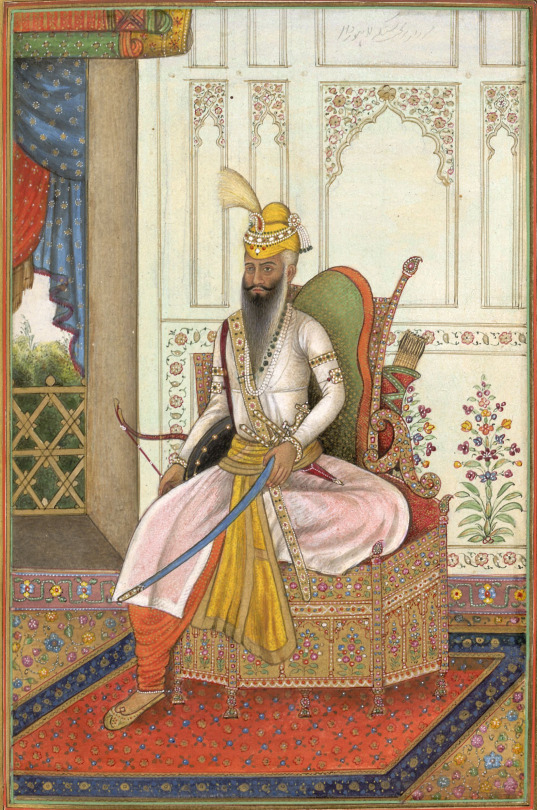

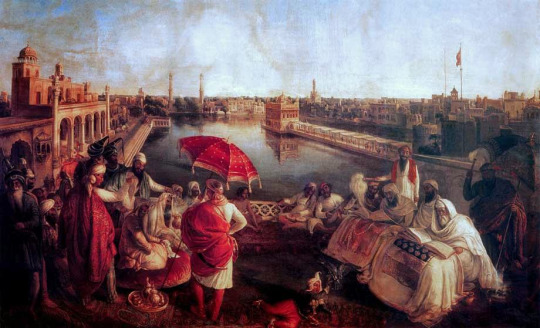



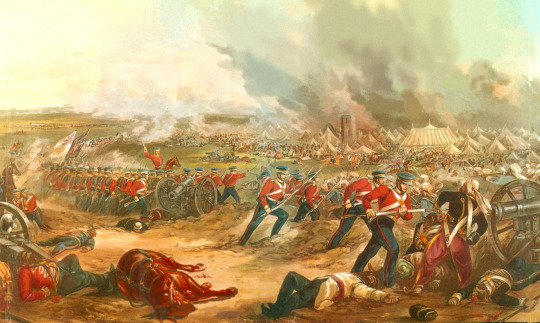
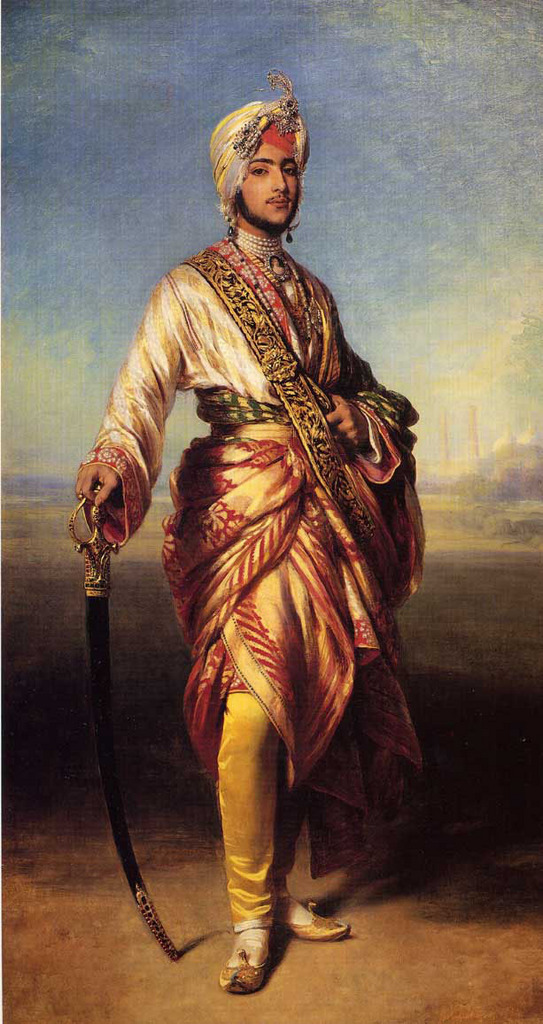
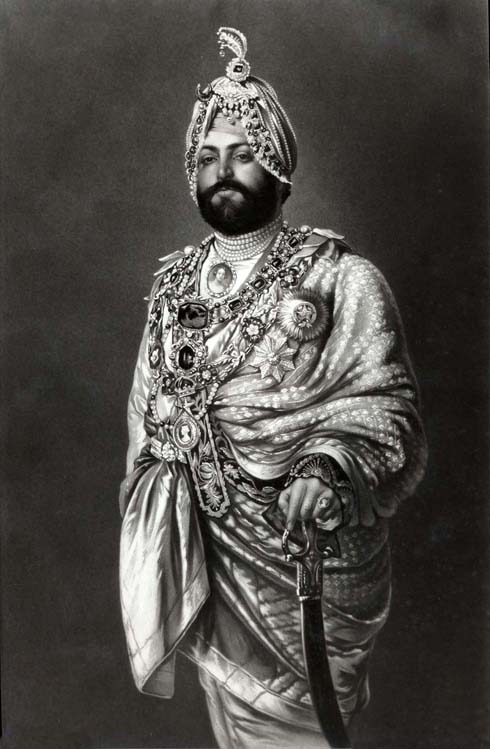


#military history#history#sikh#sikhism#india#british east india company#british imperialism#british empire#19th century#victorian era#ranjit singh#punjab#pakistan#18th century#mughal empire#maratha empire#queen victoria#british india
6 notes
·
View notes
Text

Maharaja Ranjit Singh 's Darbar
if you want to know about him you should visit
this site
2 notes
·
View notes